Abstract
The immunoglobulin class and subclass distribution of antibodies to double-stranded (ds) DNA has been determined in NZB/W F1 hybrid mice by a double antibody radioimmunoassay. The results show that there are marked age- and sex-related variations in the class and subclass distribution of these antibodies. In young mice of both sexes, the predominant anti-ds DNA antibody was of the IgM class, but as the animals aged, there was an increase in the level of the IgG2a and IgG2b antibodies. An apparent switch from predominantly IgM to IgG antibody occurred in females before males and at about the age of onset of overt immune complex disease in these animals. The possible significance of these results in the pathogenesis of the murine lupus syndrome is discussed.
Full text
PDF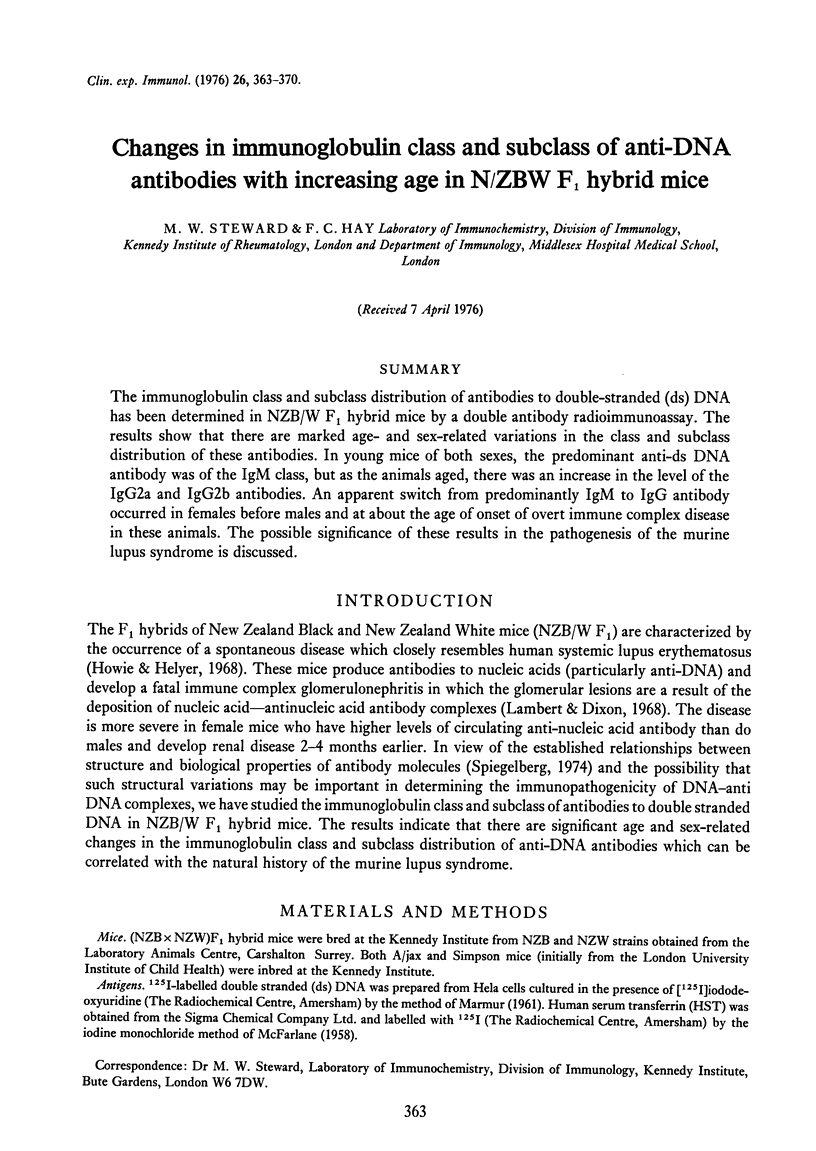
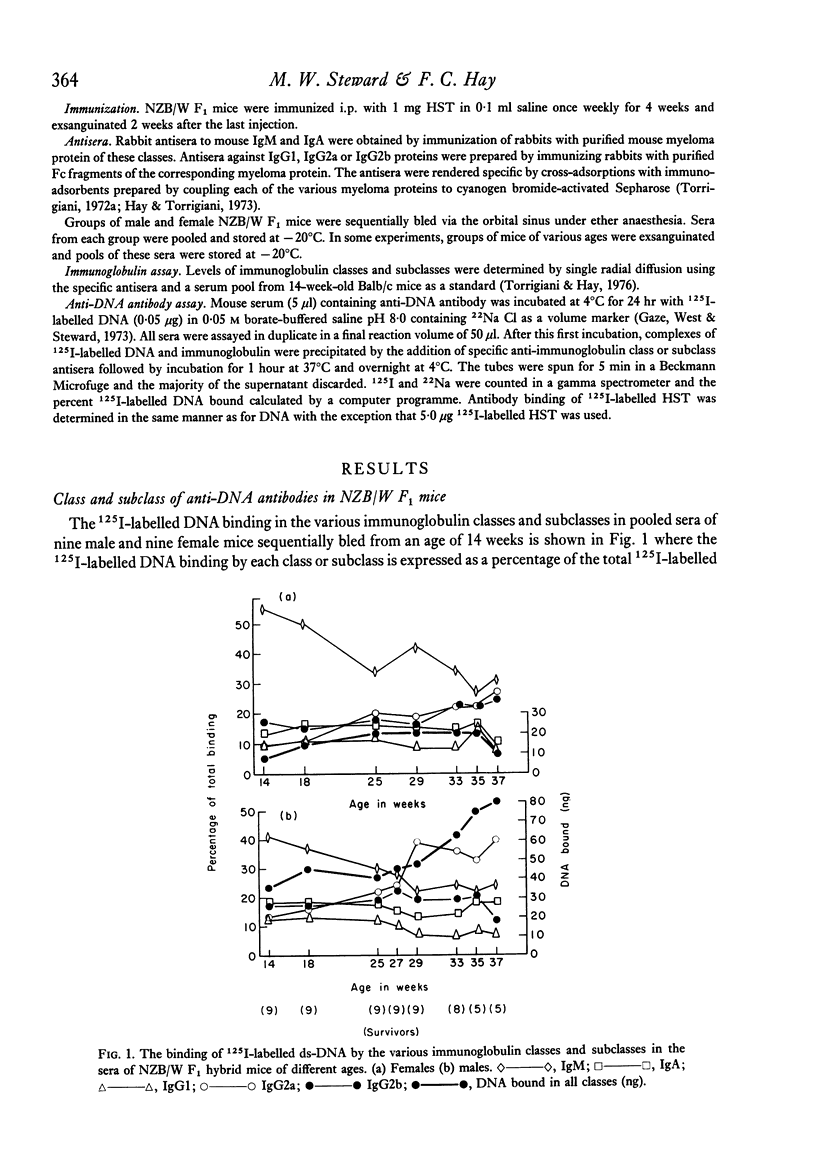
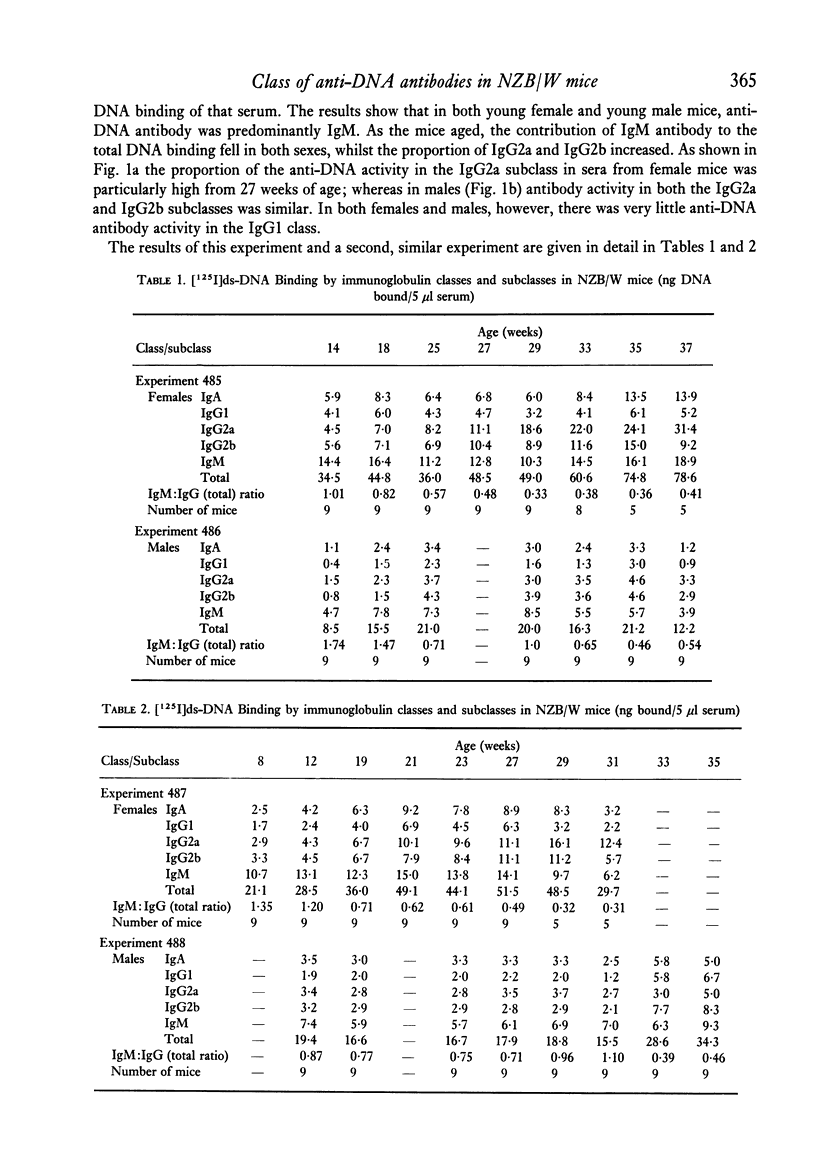
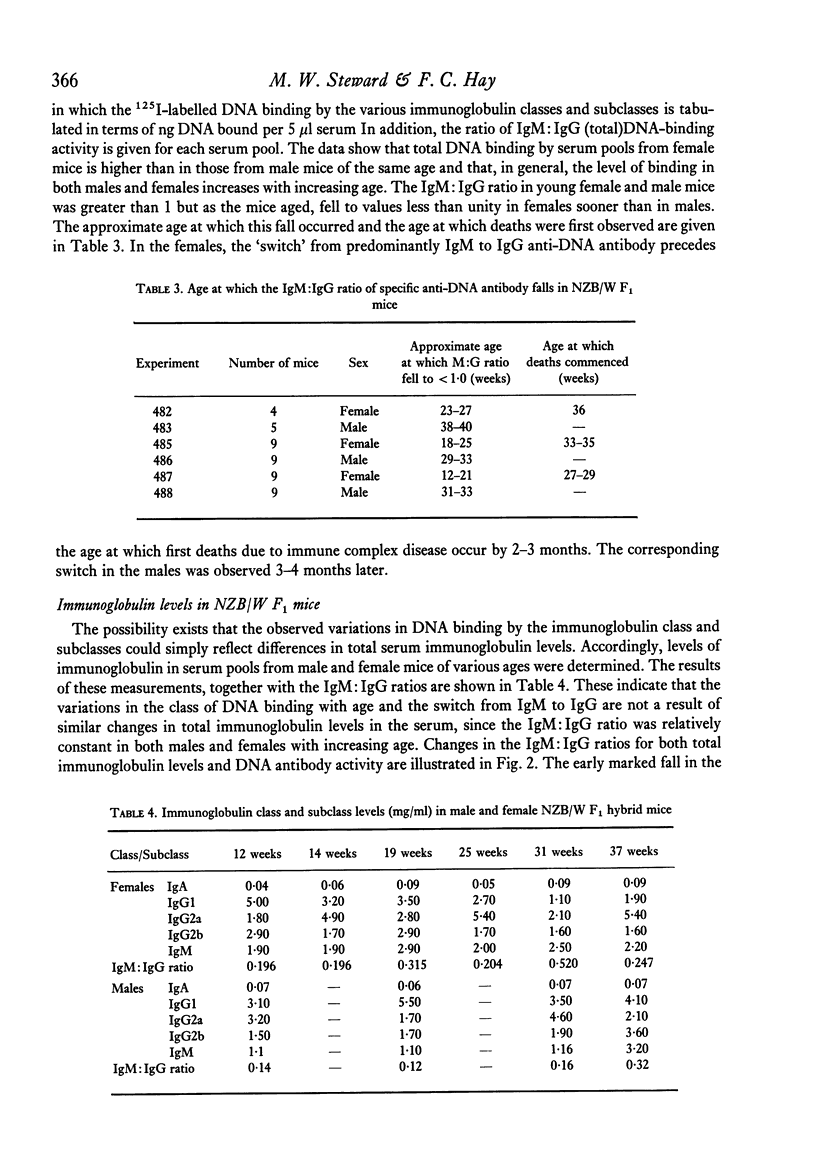
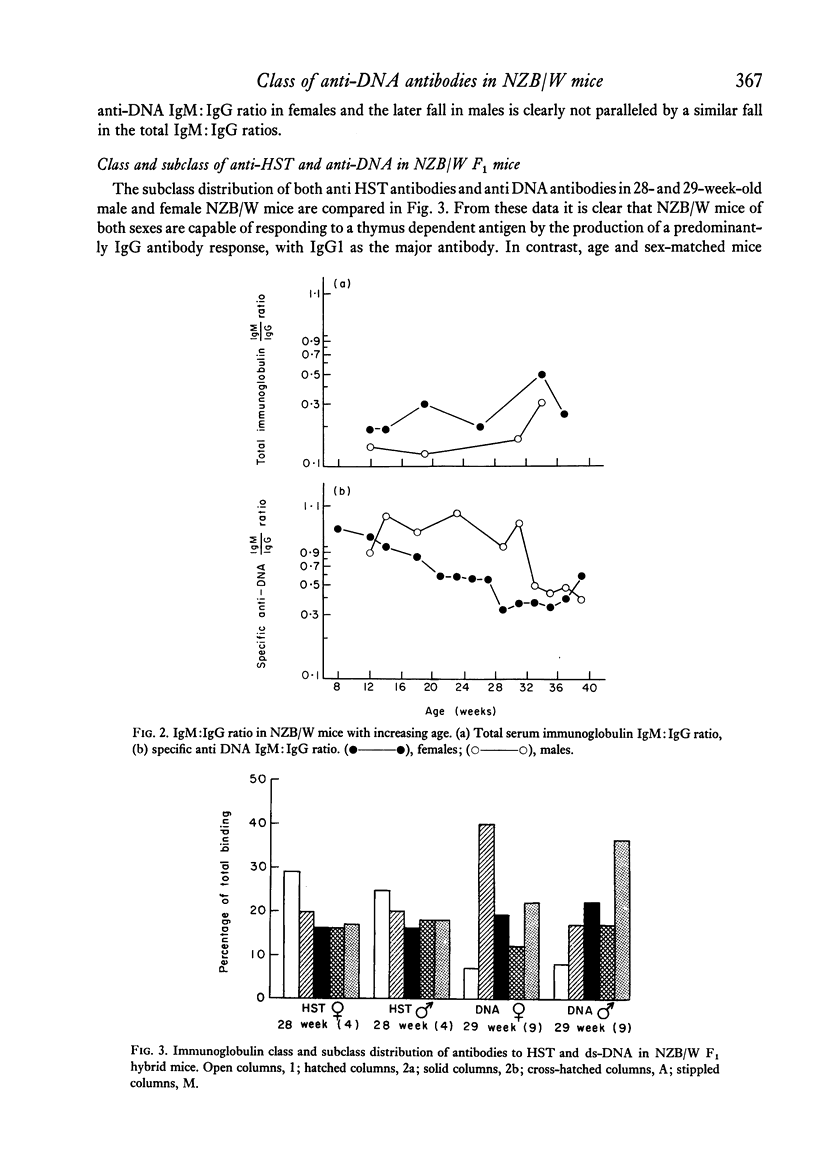
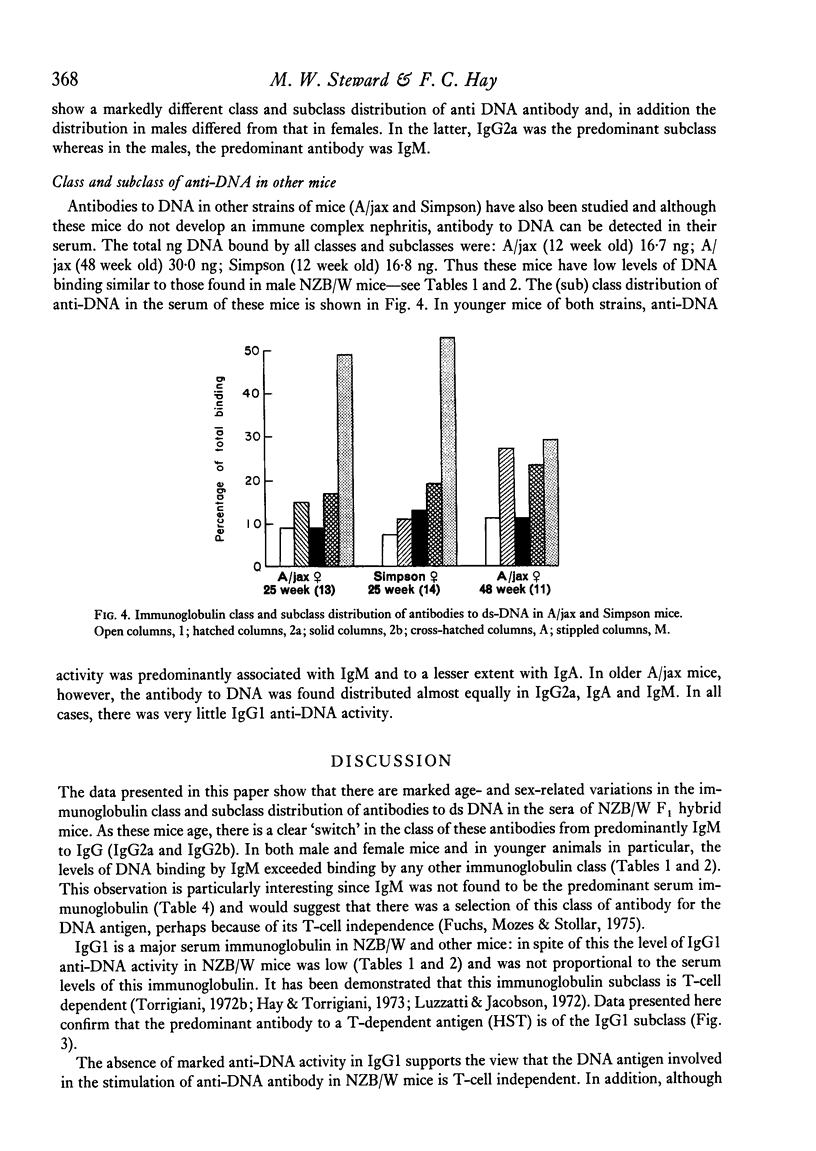
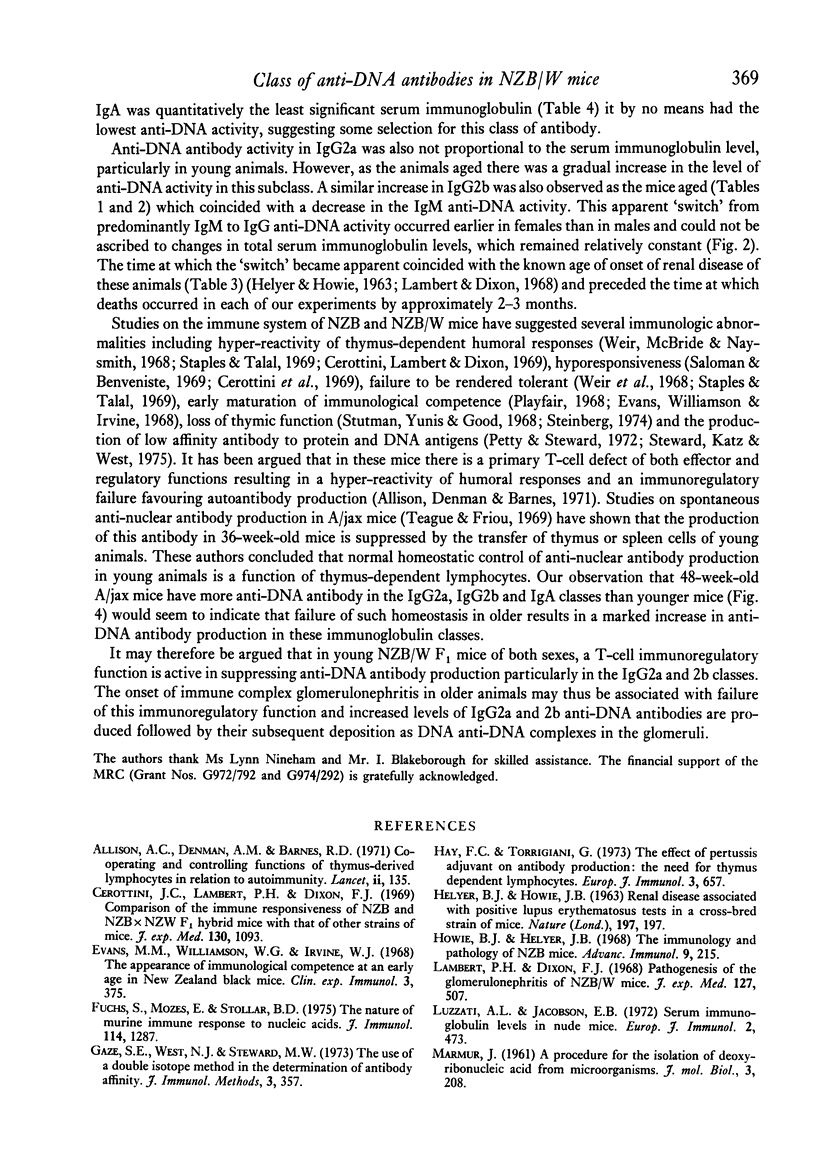

Selected References
These references are in PubMed. This may not be the complete list of references from this article.
- Allison A. C., Denman A. M., Barnes R. D. Cooperating and controlling functions of thymus-derived lymphocytes in relation to autoimmunity. Lancet. 1971 Jul 17;2(7716):135–140. doi: 10.1016/s0140-6736(71)92306-3. [DOI] [PubMed] [Google Scholar]
- Carter M. J., Parsons D. S. Carbonic anhydrase activity of mucosa of small intestine and colon. Nature. 1968 Jul 13;219(5150):176–177. doi: 10.1038/219176a0. [DOI] [PubMed] [Google Scholar]
- Cerottini J. C., Lambert P. H., Dixon F. J. Comparison of the immune responsiveness of NZB and NZB X NZW F1 hybrid mice with that of other strains of mice. J Exp Med. 1969 Nov 1;130(5):1093–1105. doi: 10.1084/jem.130.5.1093. [DOI] [PMC free article] [PubMed] [Google Scholar]
- Evans M. M., Williamson W. G., Irvine W. J. The appearance of immunological competence at an early age in New Zealand black mice. Clin Exp Immunol. 1968 Jun;3(5):375–383. [PMC free article] [PubMed] [Google Scholar]
- Fuchs S., Mozes E., Stollar B. D. The nature of murine immune response to nucleic acids. J Immunol. 1975 Apr;114(4):1287–1291. [PubMed] [Google Scholar]
- HELYER B. J., HOWIE J. B. Renal disease associated with positive lupus erythematosus tests in a cross-bred strain of mice. Nature. 1963 Jan 12;197:197–197. doi: 10.1038/197197a0. [DOI] [PubMed] [Google Scholar]
- Hay F. C., Torrigiani G. The effect of pertussis adjuvant on antibody production: the need for thymus-dependent lymphocytes. Eur J Immunol. 1973 Oct;3(10):657–659. doi: 10.1002/eji.1830031015. [DOI] [PubMed] [Google Scholar]
- Howie J. B., Helyer B. J. The immunology and pathology of NZB mice. Adv Immunol. 1968;9:215–266. doi: 10.1016/s0065-2776(08)60444-7. [DOI] [PubMed] [Google Scholar]
- Lambert P. H., Dixon F. J. Pathogenesis of the glomerulonephritis of NZB/W mice. J Exp Med. 1968 Mar 1;127(3):507–522. doi: 10.1084/jem.127.3.507. [DOI] [PMC free article] [PubMed] [Google Scholar]
- Luzzati A. L., Jacobson E. B. Serum immunoglobulin levels in nude mice. Eur J Immunol. 1972 Oct;2(5):473–474. doi: 10.1002/eji.1830020518. [DOI] [PubMed] [Google Scholar]
- Petty R. E., Steward M. W. Relative affinity of anti-protein antibodies in New Zealand mice. Clin Exp Immunol. 1972 Nov;12(3):343–350. [PMC free article] [PubMed] [Google Scholar]
- Playfair J. H. Strain differences in the immune response of mice. I. The neonatal response to sheep red cells. Immunology. 1968 Jul;15(1):35–50. [PMC free article] [PubMed] [Google Scholar]
- Salomon J. C., Benveniste J. The immune response in NZBxNZW F1 hybrid mice. Clin Exp Immunol. 1969 Feb;4(2):213–225. [PMC free article] [PubMed] [Google Scholar]
- Spiegelberg H. L. Biological activities of immunoglobulins of different classes and subclasses. Adv Immunol. 1974;19(0):259–294. doi: 10.1016/s0065-2776(08)60254-0. [DOI] [PubMed] [Google Scholar]
- Staples P. J., Talal N. Relative inability to induce tolerance in adult NZB and NZB-NZW F1 mice. J Exp Med. 1969 Jan 1;129(1):123–139. doi: 10.1084/jem.129.1.123. [DOI] [PMC free article] [PubMed] [Google Scholar]
- Steinberg A. D. Pathogenesis of autoimmunity in New Zealand mice. V. Loss of thymic suppressor function. Arthritis Rheum. 1974 Jan-Feb;17(1):11–14. doi: 10.1002/art.1780170103. [DOI] [PubMed] [Google Scholar]
- Steward M. W., Katz F. E., West N. J. The role of low affinity antibody in immune complex disease. The quantity of anti-DNA antibodies in NZB/W F1 hybrid mice. Clin Exp Immunol. 1975 Jul;21(1):121–130. [PMC free article] [PubMed] [Google Scholar]
- Stutman O., Yunis E. J., Good R. A. Deficient immunologic functions of NZB mice. Proc Soc Exp Biol Med. 1968 Apr;127(4):1204–1207. doi: 10.3181/00379727-127-32910. [DOI] [PubMed] [Google Scholar]
- Torrigiani G. Quantitative estimation of antibodies in the immunoglobulin classes of the mouse. I. Effect of adjuvants on the antibody response to human serum albumin and keyhole limpet haemocyanin. Clin Exp Immunol. 1972 May;11(1):125–135. [PMC free article] [PubMed] [Google Scholar]
- Torrigiani G. Quantitative estimation of antibody in the immunoglobulin classes of the mouse. II. Thymic dependence of the different classes. J Immunol. 1972 Jan;108(1):161–164. [PubMed] [Google Scholar]


